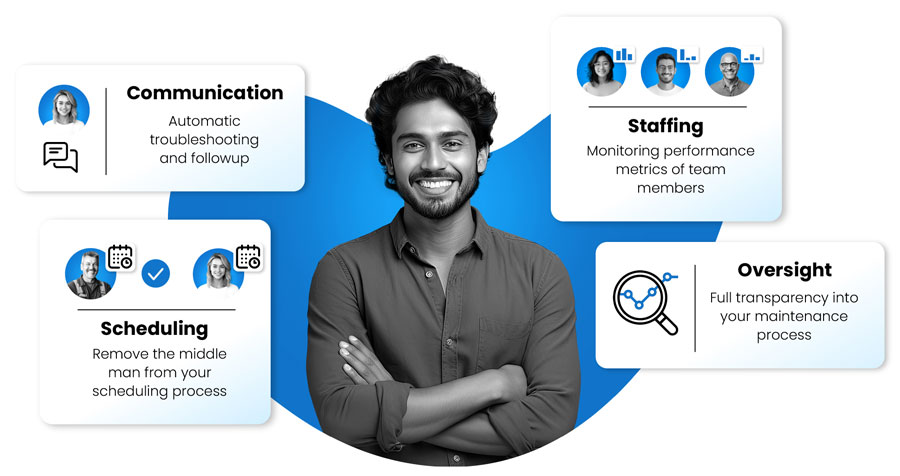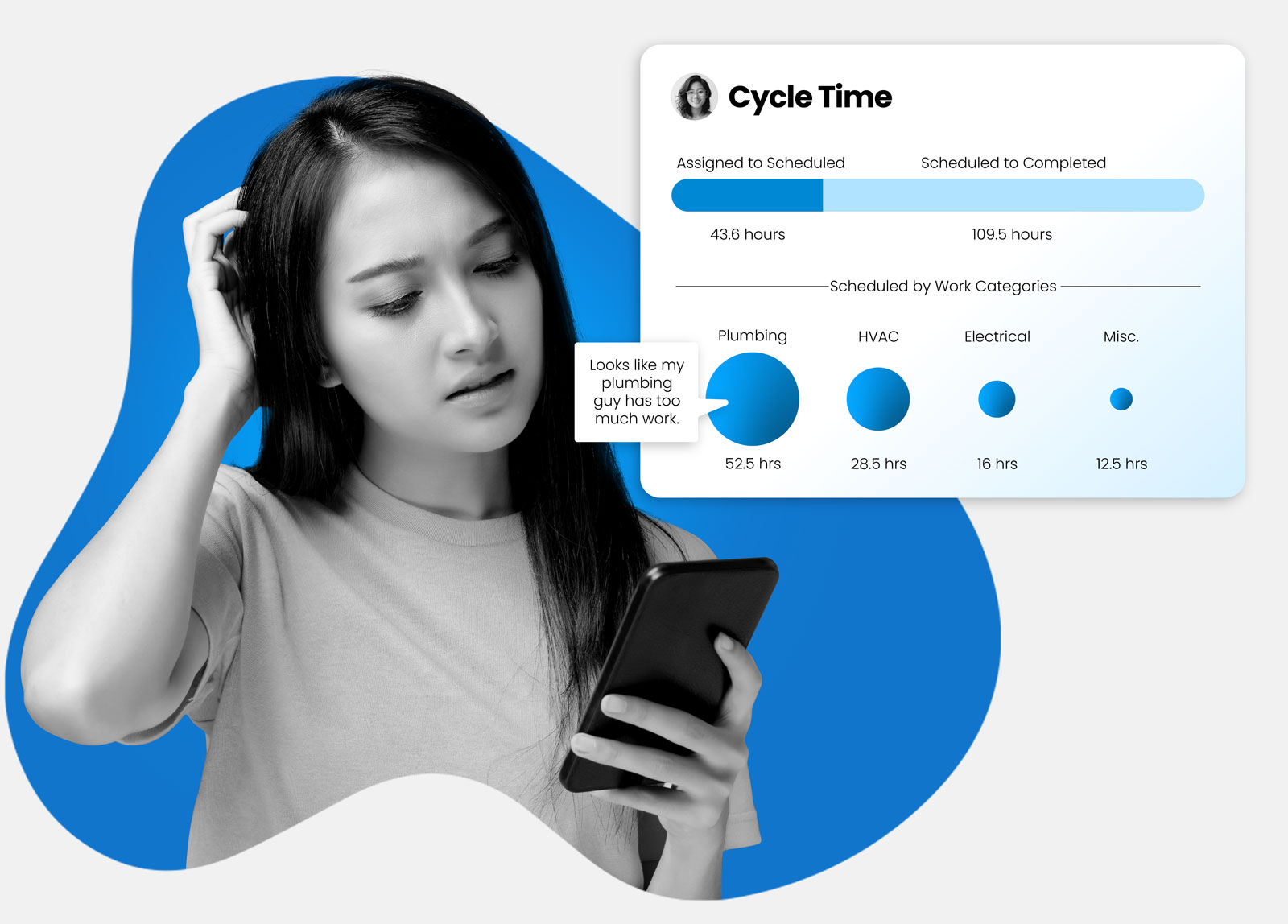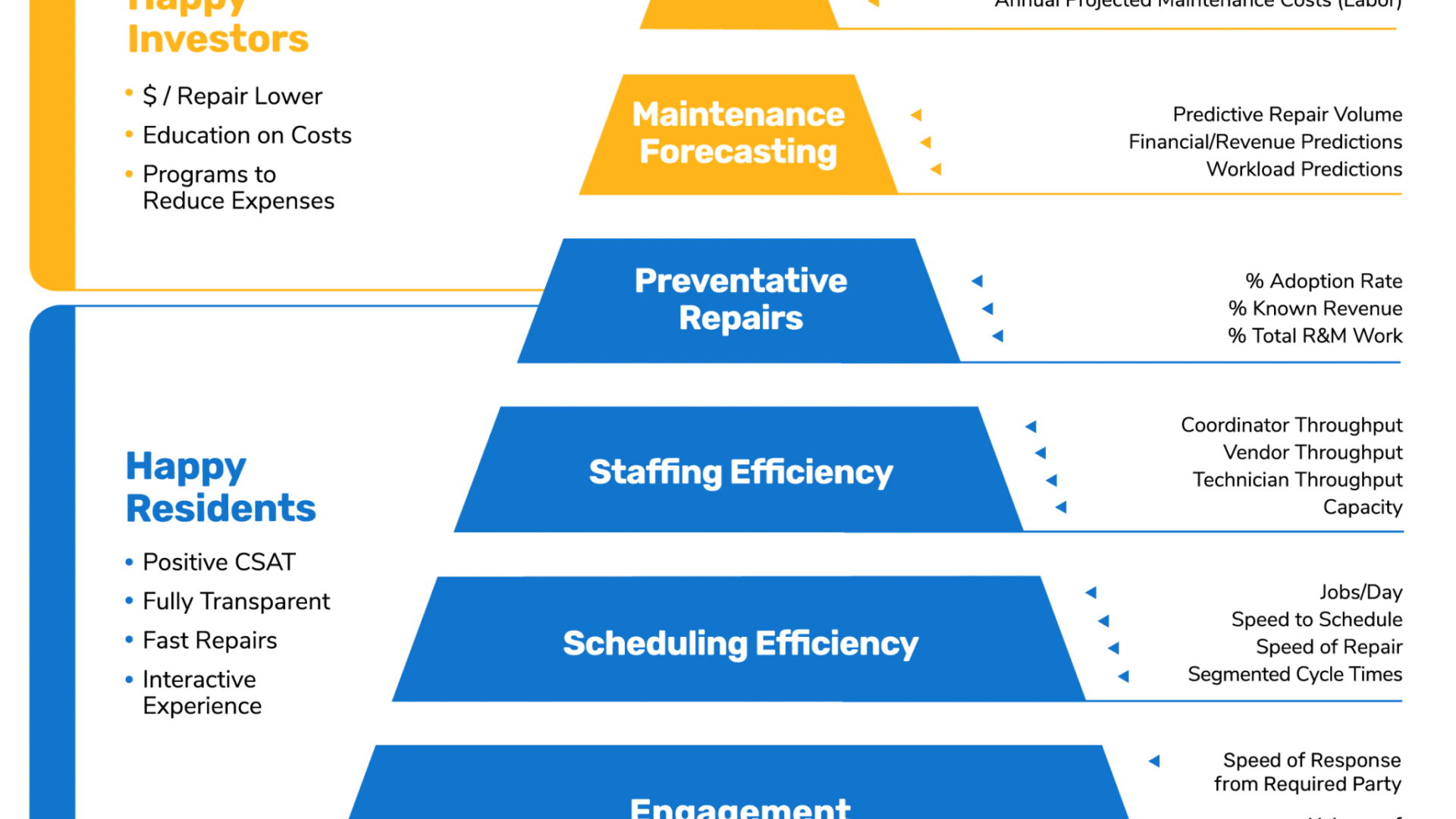Ensuring you have the right amount of maintenance team members to accomplish your business goals is crucial to success. As we move up The Ladder of Maintenance Excellence, you’ll find yourself on the third step: staffing efficiency. Suppose you don’t have enough coordinators, vendors, and internal technicians. In that case, you won’t be able to handle the number of work orders coming in efficiently. Insufficient availability of coordinators, vendors, and internal technicians can hinder the efficiency of incoming work orders. As a result, speed of repair may exceed the average time, ultimately impacting resident satisfaction.
On the contrary, having too many technicians and coordinators means you are paying too many people, and they aren’t staying busy, which will negatively impact your NOI, upsetting your owners and investors. It’s also crucial to make sure your technicians are spending their time effectively repairing and managing maintenance. Finding the perfect balance of maintenance staff to match the number of work orders you have coming in is how you can achieve excellent staffing efficiency.
How Can You Measure Maintenance Staffing Efficiency?
One of the most complex parts of perfecting maintenance staffing efficiency is determining what your throughput should be and whether you have the correct number of staff to achieve that throughput. When you look at your maintenance coordinators, you need to be able to determine how many work orders they can handle effectively. A metric you can track to measure this is your responsiveness versus your volume throughout. In other words, how fast are your coordinators responding to requests, and how many work orders can they close from start to finish within a given time frame?
When looking at vendor throughput or efficiency, you want to look at more than just who is the fastest and the cheapest; you also want to ensure they are keeping your residents happy. Repair speed and resident satisfaction are good metrics to track to measure vendor efficiency.
To track the efficiency of your internal maintenance technicians, we recommend monitoring jobs per day and your technician utilization rate. Tracking these metrics will help you determine your maintenance team’s efficiency while also measuring volume and quality.
Property Meld’s new Insights feature gives you access to all these metrics and more so you can make data-driven decisions to improve your staffing efficiency instead of making assumptions.
See Insights in Action
Jobs per Day Versus Technician Utilization Rate
When looking at your internal maintenance technicians, ensuring they are efficient is crucial since they are on your payroll and usually in a salaried position. When measuring their efficiency, tracking both jobs per day and technician utilization rate is essential, or there may be significant blind spots.
For example, if you only track jobs daily, you may have a technician who only takes quick, easy jobs. Therefore, your jobs per day will seem very healthy, yet many working hours are being wasted.
On the other hand, if you are only tracking technician utilization rate and you have a technician spending way too much time on one job, it may seem like they are utilizing their time well, when in reality, they are inefficient.
Tracking these metrics side by side will help you ensure your technicians are getting through a good amount of work orders each day and using their time wisely.
What is the Difference Between Scheduling and Staffing Efficiency
Although some metrics overlap between scheduling and staffing efficiency, they differ significantly. Scheduling efficiency measures how quickly your maintenance team can complete a job, i.e., your repair speed. Staffing efficiency ensures you have the right size team to handle the number of work orders, i.e., your jobs per day or amount of open work orders at a given time.
How Can You Improve Staffing Efficiency?
You can only improve your staffing efficiency by increasing your visibility. You need to have visibility to determine how each member of your team is performing. With Insights by Property Meld, you can track the efficiency of each maintenance team member to determine where inefficiencies are occurring and identify areas where you can provide additional training or resources to help those employees improve. It is vital to ensure you have regular intervals that you have determined to check in on these metrics to ensure you are intervening when things start to slip.
Secondly, you must create a culture that rewards high-performing team members. This way, your team members will be motivated to get work done quickly and ensure they are maintaining quality in all the work they do. In our last Beyond Maintenance, we met with industry leaders to discuss how they use maintenance metrics to build performance bonus programs for high-performing employees. You can watch that video here.
Schedule a Demo With Our Team















